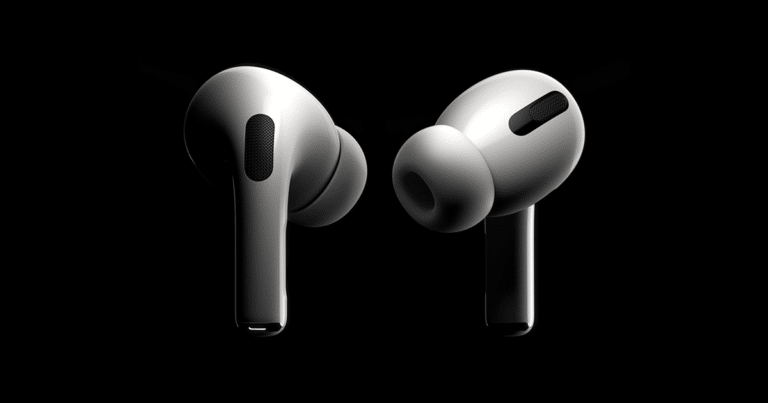
A
common AR industry sentiment is that the smartphone will pave the way for smart glasses. Before AR glasses achieve consumer-friendly specs and price points, AR’s delivery system is the device we all have in our pockets. There, it can stimulate demand for AR experiences.
This thinking holds up, but a less-discussed product class could have a greater impact in priming consumers for AR glasses: wearables. Among other outcomes, AR glasses’ cultural barriers could be lessened by conditioning consumers to wearing sensors on their bodies.
Meanwhile, tech giants are motivated toward wearables. They’re each building wearables strategies that support or future-proof their core businesses, where tens of billions in annual revenues are at stake. For example, Apple’s wearables offset iPhone sales declines.
But how will wearables continue to penetrate consumer markets and benefit AR glasses? This is the topic of a recent ARtillery Intelligence report, Wearables: Paving the Way for AR Glasses. The device class continues to grow and acclimate the world to AR glasses still to come.
Music to its Ears
Starting with Apple, understanding its wearables play requires getting into its head. And one way to do that is to look at its financial motivations. Wearables revenues could signal Apple’s continued financial motivations to lessen dependence on a maturing iPhone.
Breaking that down, Apple’s Q2 earnings last year showed “wearables, home and accessories” revenue growing 24 percent ($1.2 billion), while iPhone sales fell 6.7 percent ($2.1 billion). The former doesn’t fully redeem the latter, but the offset is clearly valued by Apple.
Moreover, the wearables category by itself is now the size of a Fortune 150 company. Demand is greater than Apple can even fulfill, as it’s supply-constrained for the Apple Watch Series 3 and AirPods Pro. This is a good problem to have and indicates long-term strength in the category.
Perhaps most interesting and less-discussed, 75 percent of Apple Watch purchases are from users that are new to the device. Given Apple’s penchant for platform lock-in and increased ARPU through multi-device ownership, new users at the beginning of that journey are music to its ears.
iWear
Bringing the discussion back to AR, Apple’s wearables category is where its AR glasses will live. That bodes well, given that they’re born into a division that’s graced with political capital and investment. They’ll inherit the drive to diversify revenue and offset iPhone losses.
As for what AR glasses will do for Apple’s revenue growth, it could both prop up and succeed the aging iPhone. The former happens as it creates reliance on the iPhone. In other words, the iPhone gains importance — and user incentive to upgrade — if it powers your glasses.
Early glasses functions could include things like an ambient “notification layer” that replaces some of the content and alerts you currently look down for. Moreover, glasses could join a suite of wearables that augments your life from several angles, and with several devices.
That will include line-of-sight graphics from your AR glasses to accompany the audible cues from your AirPods, and biometric micro-interactions from your Watch. This approach is classic Apple in selling a holistic suite of devices that add value and functionality to each other.
Lite AR
Going deeper on what Apple’s AR glasses could be and do, it’s evident that Apple likely won’t launch V1 smart glasses that involve “heavy AR.” This term refers to fully-realized world-immersive AR that has geometric and semantic understanding of its surroundings.
To achieve these functions, there are design tradeoffs such as bulk and heat. In the sliding scale between sleek glasses that power “light AR”; and bulky hardware that powers “heavy AR,” Apple will likely lean towards the former, as sleekness and style are core Apple design principles.
Apple also needs to think big. Because eyewear is a much larger market than AR glasses, it could enter the prescription glasses market, infused with Apple magic. In other words, it could add digital cohesion to regular glasses through the aforementioned “notification layer.”
Moreover, Apple will broaden the concept of “augmentation” beyond the AR world’s current connotations. This could include digital layers that generally help people see better; or brighten their day through mood-altering filters; or bring them utilities such as commerce.
Acclimation Play
Speaking of commerce, this is one direction hinted by Apple’s Project Gobi, which will place visual markers in retail partner locations. Apple could enable fast transactions for getting your coffee or paying your parking meter with a combination of computer vision, AR glasses and Apple Pay.
These features could go beyond Apple glasses to other wearables. Spatial audio in Airpods Pro have notable implications for audio interactions. Through all of this, Apple will lead and define society’s connotations with AR, rather than follow them. This is what Apple does.
It’s also notable that prospective AR glasses won’t just round out Apple’s wearable master plan, but they’ll also benefit from it. Back to a central theme of this report, one of the byproducts of the rise of wearables will be acclimating consumers to wearing gadgetry on their bodies.
In that sense, Apple wearables could be a step towards warming the world up to AR glasses. It’s otherwise going to be a culture clash (think: Google Glass). Asking consumers to put things on their faces is a tough sell, but AirPods and other wearables are starting to warm them up.
We’ll pause there and return next week with more from this report. Meanwhile check out the entire thing here.






